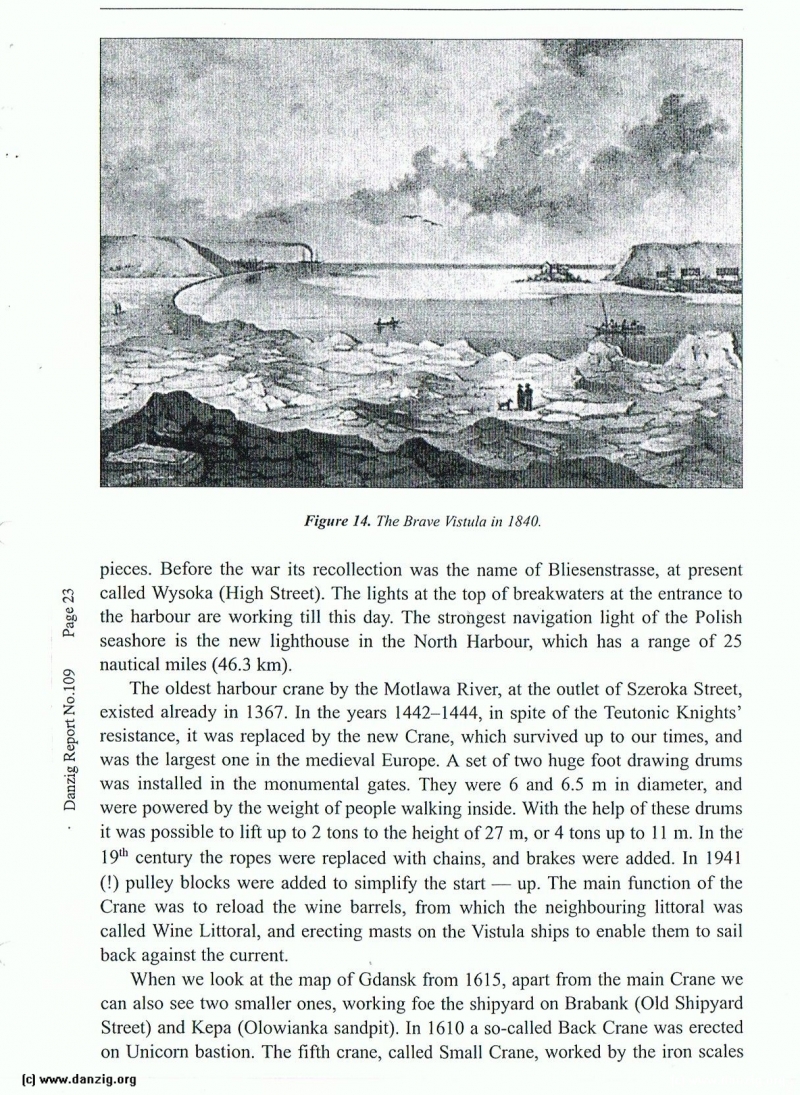
pieces. Before the war its recollection was the name of Bliesenstrasse, at present called Wysoka (High Street). The lights at the top of breakwaters at the entrance tothe harbour are working till this day. The strongest navigation light of the Polishseashore is the new lighthouse in the North Harbour, which has a range of 25 a. nautical miles (46.3 km).
The oldest harbour crane by the Motlawa River, at the outlet of Szeroka Street, existed already in 1367. In the years 1442—1444, in spite of the Teutonic Knights’ resistance, it was replaced by the new Crane, which survived up to our times, and was the largest one in the medieval Europe. A set of two huge foot drawing drums was installed in the monumental gates. They were 6 and 6.5 m in diametei; and were powered by the weight of people walking inside. With the help of these drums it was possible to lift up to 2 tons to the height of 27 m, or 4 tons up to 11 m. In the 9 century the ropes were replaced with chains, and brakes were added. In 1941 (!) pulley blocks were added to simplify the start up. The main function of the Crane was to reload the wine barrels, from which the neighbouring littoral was called Wine Littoral, and erecting masts on the Vistula ships to enable them to sail back against the current.
When we look at the map of Gdansk from 1615, apart from the main Crane we can also see two smaller ones, working foe the shipyard on Brabank (Old Shipyard Street) and Kepa (Olowianka sandpit). In 1610 a so-called Back Crane was erected on Unicorn bastion. The fifth crane, called Small Crane, worked by the iron scales
Danzig Report Vol. 1 - Nr. 109 - October - November - December - 2000, Page 29.
Hits: 3241
Added: 29/07/2015
Copyright: 2025 Danzig.org

